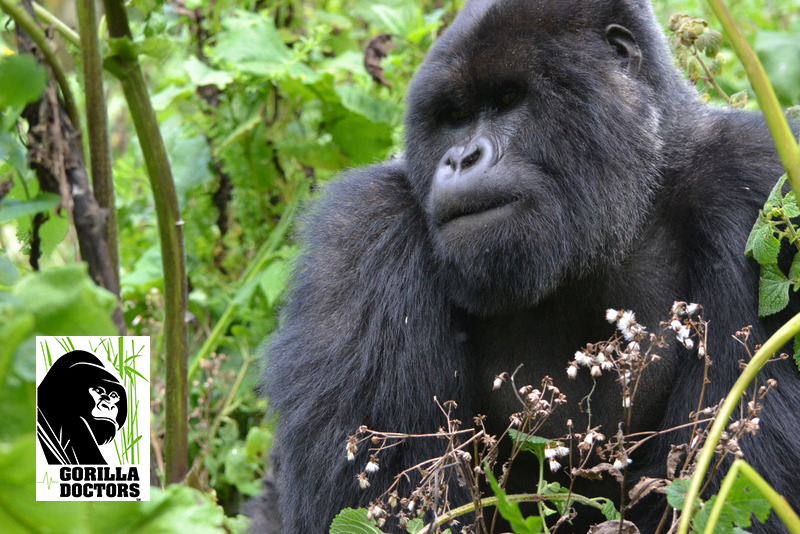Amahoro Group Loses Newborn Twins
By Gorilla Doctors Staff on Wednesday, September 7th, 2016 in Blog.
Kalisimbi, mother of the twins.
A female in Amahoro group was spotted with newborn twin babies late last month, but unfortunately Gorilla Doctors learned the following day that neither baby survived its first day of life.
After the mother, Kalisimbi, carried both dead infants all night, she dropped one of the babies the following day and Volcanoes National Park trackers delivered the body to Gorilla Doctors veterinarians for a post-mortem examination.
The baby was a female with fully developed bones. There was bruising across the back of her head , which suggests she may have suffered trauma during or after birth. Because her stomach and intestines were empty, it was clear she did not nurse after birth. But her lungs contained air, confirming that she was alive at birth. There were no congenital abnormalities and no evidence of infection.
While the death of a mountain gorilla is always a sad event for all who are involved in the conservation of this endangered species, such events present opportunities to learn as much as possible about what factors contribute to mortality in mountain gorillas. Until Gorilla Doctors can examine this infant’s tissues under a microscope with our veterinary pathologist Dr. Linda Lowenstine and her colleagues, we will not know exactly why this infant gorilla did not survive her first day.
Fortunately, thanks to the tremendous investment of energy and time on the part of Dr. Lowenstine and a group of dedicated veterinary pathologists, the North American Pathology Network, as well as donations of funds to purchase critically important equipment, Gorilla Doctors is now able to review gorilla tissues with pathologists over the Internet using a camera connected to our microscope in Rwanda. This technology has already greatly shortened the time between a gorilla’s death and determining its cause of mortality.
Dr. Jean Bosco NOHELI
Field Veterinarian/Rwanda


 Donate
Donate